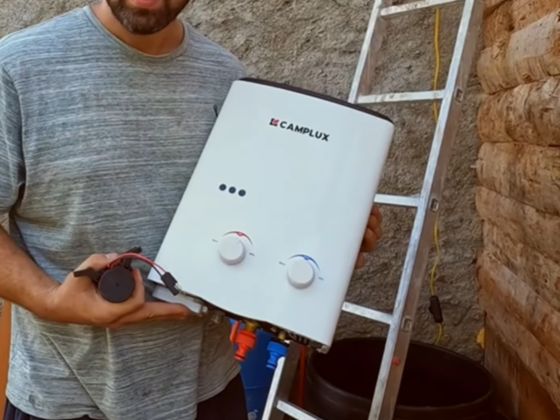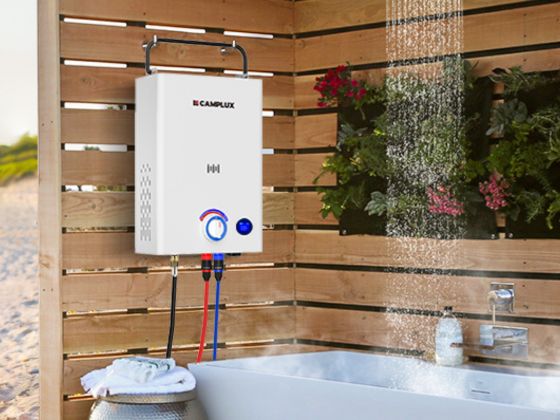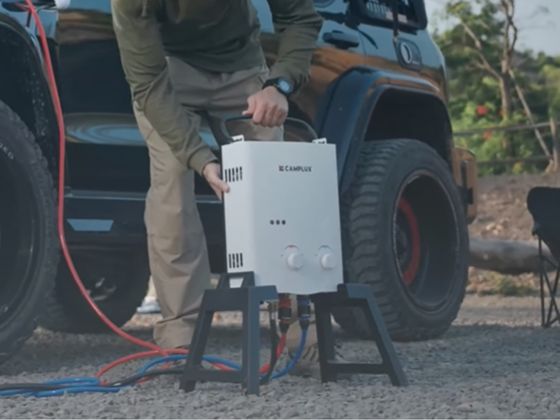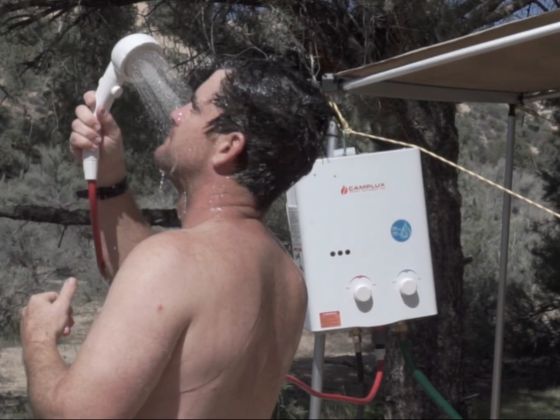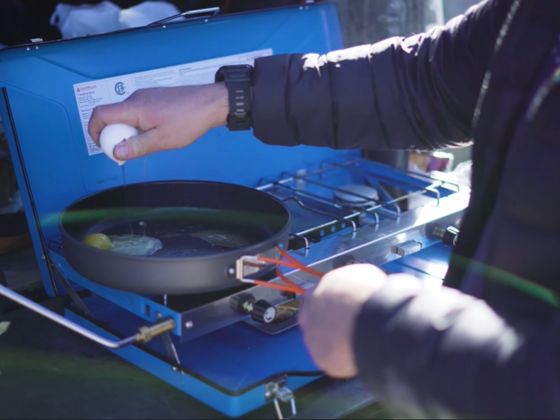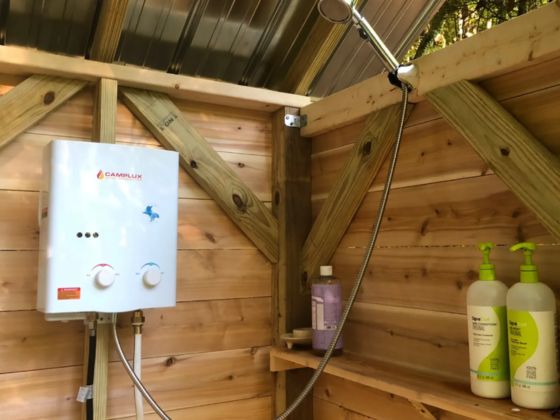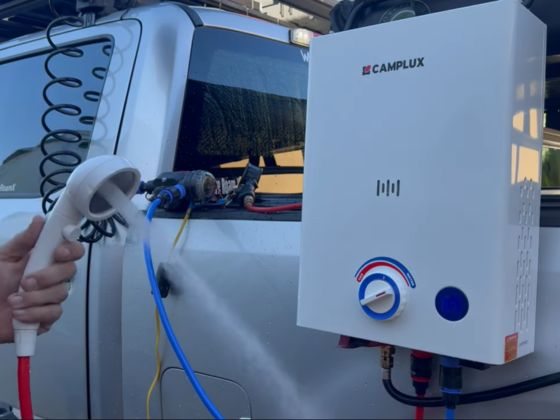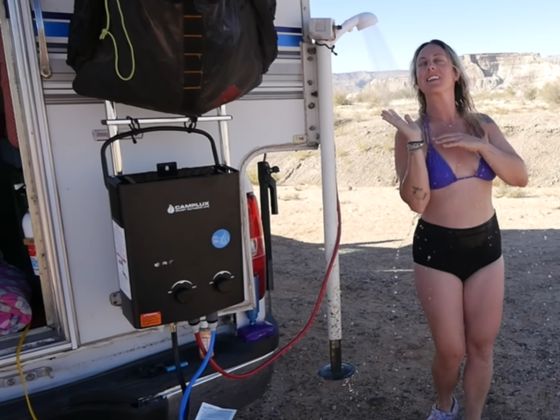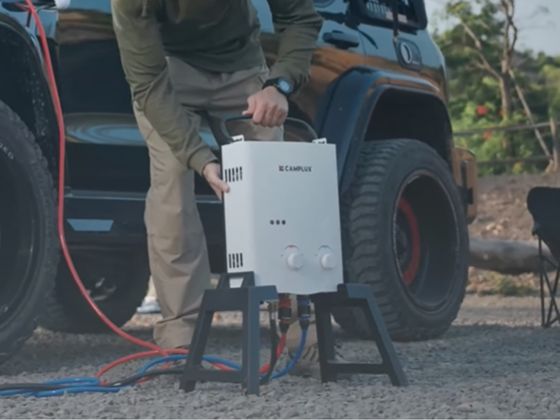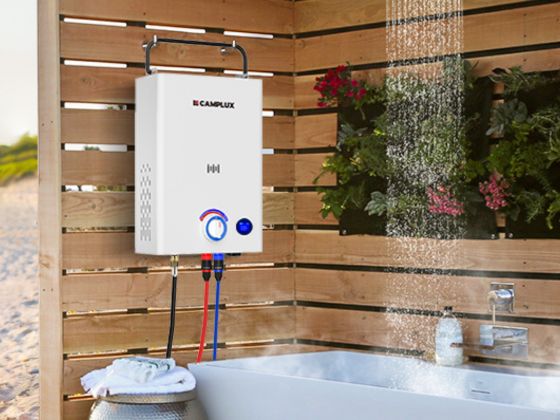Why Energy Use Matters in the Aussie Outback
If you live off-grid or hours from the nearest Bunnings, hot water isn't a luxury—it's part of staying healthy and sane. But in remote Australia, every watt and every megajoule count. Running a genset to keep a tank warm all day is like idling your ute for hours just so the cabin feels toasty when you hop in later. Energy is expensive to generate, tricky to deliver, and unreliable if you're at the end of a long power line. That's why comparing how different hot water system use energy—when they're heating and when they're doing nothing—matters so much for off-grid families and people in remote areas.
This guide lays out how Camplux's on-demand approach stacks up against traditional heaters. We'll keep it practical, translate the tech, and call out which setups suit real-world Aussie life. Short version: the less time you spend heating water you're not using, the better for your bills and your stress levels.
What We're Comparing and How
Traditional water heaters generally fall into a few buckets:
- Electric storage: a big insulated tank, always kept hot.
- Gas storage: similar idea, but gas burner under a tank.
- Heat pumps: efficient electric units that move heat from air into water.
- Solar hot water: rooftop collectors plus a tank, often with an electric or gas booster.
Camplux sits in a different camp: outdoor LPG tankless units (think BV158 and F10) that heat water as you use it. No tank to keep warm. No power wasted when nobody's in the shower. To compare fairly, we'll look at:
- Energy units (kWh for electricity, MJ for gas) and how they translate to dollars.
- Temperature rise (ΔT): how many degrees the heater can lift the water.
- Flow rate (L/min): how much hot water you get at a comfortable temp.
- Standby losses: energy burned just to keep a stored tank hot.
- Upkeep: what it takes to keep each system humming.
- Total cost of ownership over five years: upfront, running, and maintenance.
If terms like ΔT and L/min feel abstract, here's the backyard version: ΔT is how many degrees you can raise cold water to reach a comfy shower. L/min is how fast it comes out. Both together decide whether your shower feels brilliant or borderline.
The Big Efficiency Split: On-Demand vs. Keeping a Tank Hot
Storage heaters are like a kettle you never turn off. They lose heat to the air—slowly, but 24/7. That's standby loss, and in a remote setting it's the energy drain that sneaks up on your fuel budget. A tankless system is more like boiling water only when you need a cuppa. Tap on? Burn fuel. Tap off? Burner sleeps.
In everyday life, your hot water demand peaks morning and evening. All those quiet hours in between are when a storage tank quietly sips energy. With tankless, those hours cost nothing. For off-grid households, chopping that "doing-nothing energy" is often the single biggest win.
Three Scenario Run-Throughs (with simple, realistic assumptions)
Let's stress-test the idea using three familiar scenarios. We won't lock in exact tariffs or LPG prices since they vary wildly across Australia; instead we'll point out where the savings typically show up.
A. Two-person cabin/weekender
Usage: One short shower each per day, light dishwashing.
- Storage: You're keeping a whole tank hot for two quick rinses—lots of idle energy over weekdays if it's a weekender.
- Camplux tankless: Only burns when you open the tap. For sporadic use, tankless usually wins by a country mile because it avoids five days of keeping water hot for nobody.
- Takeaway: For intermittent use, on-demand heat often halves or more the energy compared with storage.
B. Four-person off-grid family home
Usage: Daily showers for four, morning and evening peaks, kitchen use, occasional laundry warm water.
- Storage: Big enough tank to cover peak draws means higher standby losses and sometimes booster elements running during cold snaps.
- Heat pump: Strong contender in mild climates if you've got steady electricity and space near living areas. But compressors don't love freezing mornings, and draws can clash with limited solar generation windows.
- Camplux tankless: Scales neatly with peaks; no energy burn outside shower times. Pairing with a pressure pump and simple filtration gives stable flow and fewer surprises.
- Takeaway: For predictable peaks separated by quiet periods, tankless keeps a lid on standby losses while delivering comfort on cue.
C. Station/worksite with intermittent wash-downs
Usage: Unpredictable short bursts for crew showers or gear cleanup.
- Storage: You pay to keep a tank hot even if crews are out mustering and no one showers till late.
- Camplux tankless: Fire it up when the knock-off bell rings, turn it off after.
- Takeaway: For irregular demand, tankless shines—less idling, less fuss, more usable energy where it counts.
Fuel Availability and Practicality in Remote Australia
LPG is the quiet hero of the bush: easy to transport, store, and swap. Whether you're on 9 kg bottles for a weekender or 45 kg cylinders on a homestead, it's practical and predictable. If you've got solar PV, you can keep your batteries for lights, comms, and fridges while LPG handles hot water bursts with minimal electrical draw. If you still rely on a genset, tankless hot water trims run-time and diesel usage, because you're not cycling a generator all day to maintain a tank temperature.
A handy hybrid for remote homes is solar thermal or PV for baseline energy, with a Camplux tankless booster for when the heavens open and the temperature drops. The tankless unit only steps in when solar can't keep up—no dramas.
Comfort Counts: Flow, Temperature, and Stability
Efficiency is lovely, but the shower should still feel mint. Comfort is the combo of ΔT and L/min. In winter, when inlet temps dip, you need more ΔT to hit a comfy 40-42 °C. That's where a well-matched unit matters.
- Camplux BV158 is a tidy fit for outdoor hot shower and smaller setups, commonly used as a portable lpg water heater for cabins or seasonal use.
- Camplux F10 brings the grunt for multi-user homes, sustaining higher L/min while maintaining set temperature, so you're not dancing under the tap to dodge cold spots.
Worried about low flow at the tankless ignition threshold? Pair your unit with a suitable pressure pump and keep pipe runs sensible; you'll get steady ignition and a smooth temperature curve. If you're using bore or creek water, add a simple filter to protect the internals—think of it as sunscreen for your heater.
Install and Maintenance: Keep It Simple
Outdoor tankless installations keep flues and fumes outside, save indoor space, and simplify compliance. Most remote households appreciate gear that's accessible. You can walk up to a Camplux, see the controls, and get on with it. Routine upkeep typically means checking gas connections, cleaning an inlet filter, and descaling if you've got hard water. It's fewer moving parts compared with storage systems that have anodes, large-volume heat losses, and periodic element or valve issues.
Because Camplux is on-demand, there's less thermal stress on tanks (there is no tank), and less time spent heating water you'll never use. That translates to lower wear and tear and less maintenance faff over the long haul.
Environmental Angle
Cutting standby losses is like shutting the gate so the cold doesn't blow through. Whether your energy comes from LPG, grid, or a generator, wasting less heat means lower emissions overall. Pairing a Camplux with a decent solar array pushes the needle further: use sunshine for most daily electricity, and call on LPG only at shower time. That's a practical, low-carbon path for the bush without gold-plating your system.
Which Camplux Model Should You Choose?
Think about headcount, peak usage, and how often you actually need hot water.
- Light/occasional use (1-2 people, weekender, outdoor shower): Camplux BV158 is compact, quick to install, and purpose-built for outdoor use. It's a solid choice if your hot water needs are short and sweet.
- Regular family use (3-5 people, daily showers, kitchen, and laundry): Camplux F10 delivers higher flow and steadier temps during peak times. It's the unit you want when everyone queues after footy training and no one wants a cold rinse.
Helpful add-ons:
- Shower kit with quality hose and head for a consistent spray.
- Pressure pump if your supply is gravity-fed or inconsistent.
- Sediment filter to keep inlet clean and maintenance light.
- Quick-connect fittings to make seasonal setups faster.
Budget perspective over five years:
- Upfront: Tankless often costs less to buy and install than a large storage system with heavy flue work.
- Running costs: The big lever is not paying to keep water hot all day. Especially off-grid, that saves real dollars.
- Maintenance: Simple, predictable tasks with fewer large-ticket surprises.
Mini Case Studies
NSW mountain off-grid family
Winters bite, inlet water runs cold, and solar input varies through cloudy spells. Solar PV covers base loads, while a Camplux F10 ensures hot showers at dawn and dusk. Because the heater only fires when taps open, battery storage lasts longer overnight, and there's no need to pre-heat a tank before school run.
WA station/work crew
After long days in the dust, crews want fast, reliable hot water. A Camplux BV158 is mounted outdoors near the wash block. It runs only at knock-off, then sits idle. The station trims diesel use by not idling a generator to keep a tank hot all day.
Coastal campers
A family that loves weekends by the beach uses a compact setup with a jerry can, pump, and Camplux camping water heater. Five minutes to set up, five minutes to pack down, and everyone gets a proper rinse without dragging sand into the caravan.
FAQs (Aussie-specific)
Which LPG bottle size makes sense?
For occasional use, 9 kg bottles are easy to swap and carry. For family homes or frequent use, 45 kg cylinders reduce changeovers. Location, frequency, and delivery options will decide what's least hassle.
Will winter inlet temps ruin the shower?
Cold inlet simply means the heater must raise the temperature more. Choose a model sized for your ΔT and flow needs and keep expectations realistic—on very cold days, back off the flow a touch to maintain toasty temperature.
Can I combine with solar or a pressure pump?
Absolutely. Many off-grid homes run a pressure pump + filter before the heater. Solar PV handles everyday electricity; the heater sips LPG only when you need hot water.
What if my water pressure is low?
Add a compatible pump. It helps ignition at low flows and stabilises temperature. Keep pipe runs short where possible.
Any compliance or safety tips?
Use certified hoses and fittings, follow local regulations for LPG installations, and locate outdoor units per clearance guidelines. Do an annual check on connections and filters—simple and worth it.
Wrap-Up and Next Steps
For off-grid families and remote households, the winning move is to stop paying for heat you're not using. Camplux tankless heaters deliver hot water on cue, slash standby losses, and keep maintenance straightforward. Pick a BV158 for lighter, outdoor-focused setups or step up to an F10 for family duty. You'll spend less energy, hear the genset less, and still enjoy a proper, steamy camping gas hot water system—too easy.


